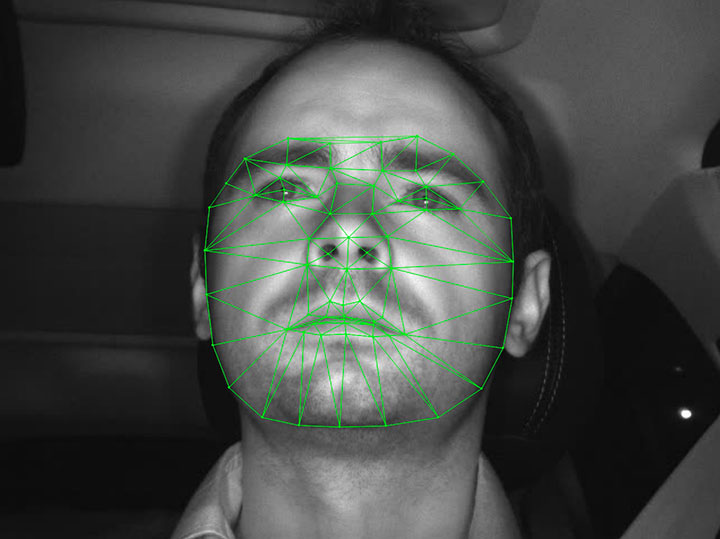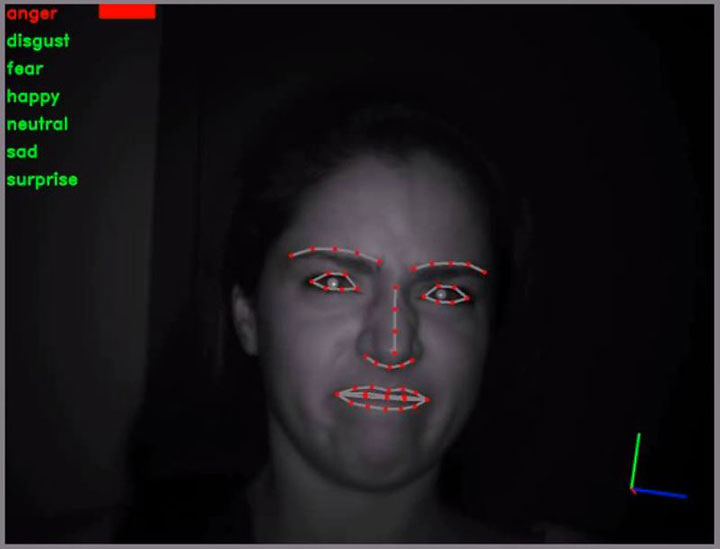A team of researchers has developed a system that allows a car to analyze the emotions of the driver. This incredible innovation makes it possible that vehicle can react to your emotions to create the most favorable conditions for a peaceful and safe driving. We tell you all about this fantastic technological innovation.
The Ecole Polytechnique Fédérale de Lausanne has joined the automaker PSA Peugeot Citroën in creating a system that is able to detect the emotions of a person sitting at the driver’s seat. This is achieved using an infrared camera and a series of LEDs mounted in front of the driver’s seat. The images are then processed in real time via a computer algorithm that will check specific points on the face (around the eyes, eyebrows, nose and lips) and infer his emotions. At the moment, only anger and disgust are detectable, but researchers are continuing to work on the project.
“Few years ago, the PSA Peugeot Citroën had installed an advanced research unit in EPFL campus, with a mission to create linkages with researchers and do collaborative projects,” says Professor Jean-Philippe Thiran, director of the laboratory of signals at the Ecole Polytechnique Fédérale de Lausanne . “Naturally, when it comes to assisting drivers, image and video comes in the discussion. And analysis of the emotional state of the driver is of major concern for the car manufacturers. So the analysis and use of the facial expressions very quickly resonate with them.” About the detection system he says: ” The position of these points and the appearance of the skin around them are extracted and entered into a classification system to recognize the expression manifested at this time. “
Today, the facial expression recognition rate in the real times is 85%. In other words, the emotion of the driver can be judged adequately in 85% of cases. This is a real achievement given the complexity of our face. The researchers admit: “When the tests have failed, it is most often due to the fact that emotional expressions are variable from person to person.This is where the difficulty lies, given the diversity of manifestations of anger”. Other areas of concerns include the possibility to understand the emotion of the driver, even when he has his head turned. In addition, the team is working on a more precise algorithm that could “get used” to its own driver to better detect emotions. Finally, it is also possible to measure the fatigue rate according to the number of times eyelid is closed.
Jean-Philippe Thiran explains we can have a concrete solution to these emotional states: “Detecting emotional states such as anger or stress could help trigger countermeasures as playing a soothing music etc. Similarly, detection of fatigue could trigger the playback of energetic music or a bright light. In the long term, in the context of semi-autonomous vehicles, it will be increasingly important that the car is aware of the emotional state of the driver to ensure the safety automatically”. A system of this type could be operational within two years. It remains to be seen if the car manufacturers incorporate it in their cars.
We were impressed by the prospects offered by this system for emotional recognition. We hope that this will prevent many accidents while at the same time making the driving more enjoyable. Do you think that cars fitted with these cameras will be more secure than conventional vehicles?



